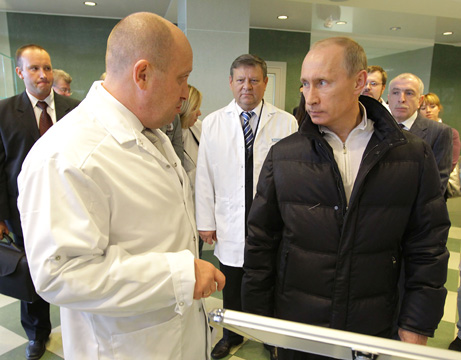
Russia’s dangerous weakness

In
- EU and strategic partners,
- EU strategy and foreign policy,
- Europe in the World,
- European defence / NATO,
On June 24, a bizarre event unfolded in Russia due to a longstanding and outspoken feud between Yevgeny Prigozhin, the leader of PMC Wagner, and the top officials of the Russian Ministry of Defense.
*****
Russia’s dangerous weakness
On June 24, a bizarre event unfolded in Russia due to a longstanding and outspoken feud between Yevgeny Prigozhin, the leader of PMC Wagner, and the top officials of the Russian Ministry of Defense. This incident carries significant potential consequences for the Russian regime, its composition, and its functionality. Although Yevgeny Prigozhin’s mutiny was short-lived, it notably eroded President Vladimir Putin’s perceived invincibility.
While the precise details and underlying motivations behind Prigozhin’s revolt remain unclear, and the long-term consequences are yet to be seen, his actions have unmistakably revealed the regime’s vulnerability in three distinct ways:
- Overall weakening of Putin’s position: The promised decisive and forceful measures against Prigozhin, as announced in the president’s televised address, have yet to materialize. Furthermore, the Kremlin had to rely on external negotiators to reach a deal with Prigozhin and quell the rebellion. Putin is an emperor without clothes.
- Perpetual competition between factions within power agencies risks causing paralysis or even implosion of the state: The ongoing power struggle not only undermines the ability to coordinate military and security operations effectively but also highlights the potential impact of this rivalry on Putin’s position. The lack of territorial defense in Russia, stunningly demonstrated during Wagner’s “March for Justice” and the incursions of the Freedom of Russia Legion and the Russian Volunteer Corps in the Belgorod oblast in May 2023, further reinforces this observation. Russia possesses a vast security and military apparatus but is left without defense.
- Ambivalent and uncertain role of the Russian people in this power struggle: While Prigozhin’s political influence and role as a ‘truth teller’ may have been limited, anecdotal evidence suggests that his actions garnered popular support. During the capture of Rostov, the population did not spontaneously revolt against the Wagner mercenaries; instead, specific images revealed explicit consent for Wagner in their conflict with the army. Moreover, public opinion research indicates that Prigozhin enjoys a certain level of support among the population. For instance, in an open-ended question posed at the end of May, asking about the preferred presidential candidate 300 days before the 2024 presidential elections, Prigozhin ranked second (albeit significantly behind Vladimir Putin, but well ahead of Sergei Shoigu). In essence, during significant events, people’s loyalty can swiftly and decisively shift. In the presence of a viable alternative and amidst a momentum of revolutionary change, or even just a glimpse of hope for change, Putin’s position may not be immune to transformation, despite his overall approval rates and high levels of trust.
However, contrary to the intuitively positive outcome of Vladimir Putin’s fall, the excitement surrounding Prigozhin’s action does not necessarily bode well for Ukraine and its allies supporting the war effort. Two risks warrant our attention and precautions:
- It is vital to avoid misconstruing Prigozhin’s rebellion against Moscow. It did not signify opposition to Russia’s war against Ukraine but rather a demand for a more effective, resolute, and coordinated approach to the conflict. As a result, Prigozhin’s actions may bolster the “party of war,” including his glorification of Thanatos, the personification of death, and the regime’s determination in the war, rather than leading to a more conciliatory approach. This underscores Putin’s unyielding readiness to employ violence.
- Recalling the August coup of 1991 and the 1993 constitutional crisis, Prigozhin’s revolt may be viewed as one of Russia’s most threatening incidents to regime stability since the 1990s. As a result, concerns from that period have resurfaced on the Western agenda, particularly regarding the command and control of Russia’s nuclear arsenal and the risks associated with the state’s collapse, including the spill-over effects of a failed state, such as mass violence and mass migration. Contrary to the 1990s, however, these concerns are particularly unsettling since Western powers have no singular point of contact within Russia to address or manage these potential risks. A chaotic, unstable Russia is indeed as dangerous as an aggressive Russia.
Assessment and Potential Observations:
- Is Putin’s regime on the brink of collapse? While facing his most dangerous challenge since coming into power, Putin’s position has undeniably weakened, but an imminent collapse is unlikely. As the repercussions of Prigozhin’s revolt become evident, significant personnel changes and potential purges at the top of various power institutions may be observed. The Kremlin’s immediate priority will be consolidating power and loyalty. However, the full extent of Prigozhin’s role in the war with Ukraine and political intrigues within the Kremlin remains uncertain.
- The Kremlin’s power struggle has become increasingly complex and opaque, resulting in heightened uncertainty, suspicion, and nervousness within the center of power.
- Putin finds himself trapped in a Catch-22 situation, faced with frustrating or impossible choices. Consequently, we may witness increased risk-taking, impulsiveness, and emotional reactions. The likelihood of desperate actions, including the potential use of tactical nuclear weapons, has increased rather than diminished.
Once again, the words of Russian philosopher and sociologist Gregory Yudin ring true when he stated in April 2023 that “Russia’s war against Ukraine is going to be a disaster for Russia in every possible way.” It becomes evident that the outcome of Putin’s war against Ukraine will shape his future as president and determine the fate of Russia as a state. This life-or-death situation will significantly influence the course of the war in Ukraine and the potential escalation dynamics with NATO.
(Photo credit: Wikimedia Commons)